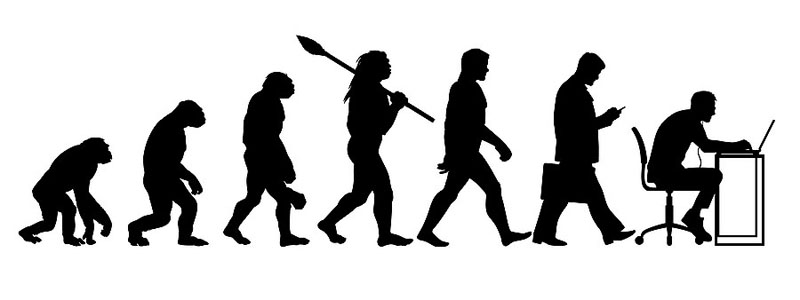A Summary of the History of the World, in Videos
ASIAN HISTORY
by Edward Ulrich, updated February 18, 2022
The videos on this page detail aspects of Asian history. It is a part of the article “A Summary of the History of the World, in Videos.”

This video details the initial cultures that arose in the river valleys of eastern Asia starting in 5,500 BC, which eventually became modern-day China.

This video summarizes all of China’s history starting with the Liangzhu culture in 3,400 BC.

This History Channel documentary talks about the life of Chin Shi Huang Di, who consolidated all of the regions of China as its first Emperor over two thousand years ago.

This video summarizes Confucius, who was a very influential Chinese philosopher that lived between 551 BC and 479 BC. His principals are based on the concepts of self-control, respect of one’s parents and rituals, and humanness towards others. One of his most famous sayings is “What you do not wish for yourself, do not do to others.” His teachings have become known as a social philosophy of “Confucianism,” gaining a large following in the centuries after his death, where rulers even looked to scholars of Confucianism for assistance with managing their empires and governing their people since his principals advocate for a naturally self-regulating society.

This documentary details an ancient funerary practice of a tribe of people in China’s Sichuan Province known as “Bo” who buried their dead in coffins suspended high along sheer cliff faces. The documentary also recreates what one of the people looked like and it explains how their DNA is being studied to determine if people currently living in the region are their decedents.

This History Channel documentary explains the discovery and exhumation of four different tombs in China that contain well-preserved mummies of aristocrats from the Han Dynasty, which was over two thousand years ago. The four tombs explained are of Xin Zhui, Liu Sheng, “Shui,” and Ling Huiping. The documentary shows footage of the mummies being examined, and it explains how the Chinese had advanced knowledge of mummification techniques where the bodies seem as if they had only recently died.

This video details the Mongol leader Genghis Khan who conquered and consolidated much of Asia during his lifetime. He lived between 1162 and 1227 AD.

This video explains how in the 1800’s the British imported opium into China that they grew in India, which they traded for tea. China eventually outlawed the importation and use of the drug, which resulted in Britain going to war with them in order to keep that market open.

This documentary details the atrocities of Mao Zedong, the genocidal founder of the People’s Republic of China who killed as many as 70 million people in the country during peacetime.

This documentary details Chinese agricultural innovations that radically improved the efficiency of growing crops, resulting in the transformation of eastern Asia thousands of years ago— usually centuries or even millennias before the same ideas were adopted by Europeans and elsewhere.

This National Geographic documentary details the Great Wall of China.

This video explains why the popular book “1421: The Year China Discovered the World” should not be considered to be legitimate history. The book claims that in the year 1421 Chinese expeditions sailed completely around the world (including even exploring the northern Arctic passage) decades before Columbus even discovered America, and it also claims that the Chinese established colonies in America. The video explains that the book was not fact checked, it relies on suppositions, it doesn’t cite proper sources, and it makes use of dubious “replications” of maps.

This History Channel documentary explains the highly advanced naval ships and weapons that were implemented by the Chinese. [Note that it mentions the author Gavin Menzies claiming that China discovered America before Columbus, but those claims have mostly been debunked.]

Ban Chiang is an ancient archeological site in northern Thailand that was settled between 3,600 BC and 200 AD. It contains evidence of farming, animal domestication, pottery, and bronze metallurgy, with evidence also showing that they traded with India. The culture had a tradition of burying their dead along with objects, which has helped researchers learn about their culture.

Angkor Wat is a large and ornate 900 year old abandoned city of stone temples located deep in the jungles of Cambodia, re-discovered in 1860 by a French explorer. The city is the size of London, and it was larger and in many ways more advanced than any European city at its time. Scholars have been able to decipher its writings due to some of it being written in sanskrit, which has revealed the city’s history. In 1431 the city was sacked by people from Thailand who enslaved many of its residents, which soon led to the area being abandoned. This well-made documentary recreates what the area looked like at the time.

This Masaman video explains the origins of people in Southeast Asia.

This video explains modern efforts to remove unexploded bombs from the landscape of Laos.

This BBC video shows an international trial in 2009 of one of Pol Pot’s henchmen Kaing Guek Eav, known as “Duch,” who committed unthinkable amounts of torture and murder of tens of thousands of innocent men, women, and children in Cambodia in the 1970’s. The documentary also explains many of the atrocities that were committed. Ridiculously he was only sentenced to 35 years of imprisonment, with time then deducted that amounted to a sentence of only 19 years in jail!

This video explains the “Trung sisters,” who in 40 AD led a revolt that overthrew the Chinese rule of their region of Southeast Asia that is present-day Vietnam.

This video summarizes the lengthy political history of Vietnam since prehistoric times.

This video summarizes many of the aspects of the Tibetan region in central Asia, including explaining conflicts that have been brought by Communist China.

This video explains various reasons why planes generally don’t fly over Tibet, including being due to the fact that if depressurization occurs over that vast mountainous area the plane won’t be able to descent to a low enough altitude for people to have enough oxygen to breathe.

This Masaman video explains the origins of native Tibetans.

This French NHK documentary details 2005 exhumations of 4,000 year old mummies that were found in burial mounds in the eastern Asian desert of the Xinjiang Province. In 1939, ancient mounds were first discovered in the arid eastern Asian desert close to the city of Loulan that contained 330 tombs, where 15 perfectly preserved mummies were recovered in 2005 that date to about 2,000 BC. The mummies have a Caucasian appearance, and their DNA is a mixture of both western and eastern Asian peoples. They were buried with care wearing ornate clothing, often laying inside canoes that contain grave goods including bronze items, ornate jewelry, and pouches of seeds of grain that originated from the Steppes to the west. At the time that region was much more fertile, where the inhabitants irrigated crops with water that was supplied from a river system that has since dried up.

This interesting documentary created by the German Archaeological Institute explains how archeologists have employed fashion designers to reverse engineer the well-designed and stylish three thousand year old “Turfan Trousers,” which had been discovered being worn by a mummy that was excavated in the Asian desert in the Xinjiang Province.

This video explains Attila the Hun, who was a barbarian leader that invaded Europe during the 400’s AD, likely originating in Mongolia. The Roman Empire described him as being “the scourge of god,” where he and his hordes of nomadic troops pushed large amounts of Germanic people deeper into Europe due to their fleeing his attacks, and the Huns also eventually attacked Constantinople and Italy. By the time Attila died, the “Hunnic Empire” was even larger than the Roman Empire, occurring at the time when the western Roman Empire collapsed.

This Masaman video explains the origins of the Huns, who were nomads that swept into Europe from the Asian Steppes during the 400’s AD.

This interesting three part PBS documentary (consolidated into one long video here) explains aspects of feudal Japan from the 1500’s to the 1800’s. It describes specifics of its Samurai culture including how the country became consolidated over that time, and it also describes documented encounters with Western explorers starting with the Portuguese in 1543, the Dutch in 1609, and the Americans in 1854, with all them being amazed by Japan’s uniform order of society and advanced culture.

This video explains how eyes with an Asian appearance that have an “epicanthic fold” are distributed throughout many population in the world.

This Masaman video explains the origins of people in the Pacific Islands.

This video summarizes the “Silk Road” trading route between China and the Mediterranean sea, which carried luxury goods such as silk fabric and spices between Asia and Europe via caravans starting in the early centuries AD.
<< previous section | next section >>
Article Tree
| A Summary of the History of the World, in Videos |
| ASIAN HISTORY |






